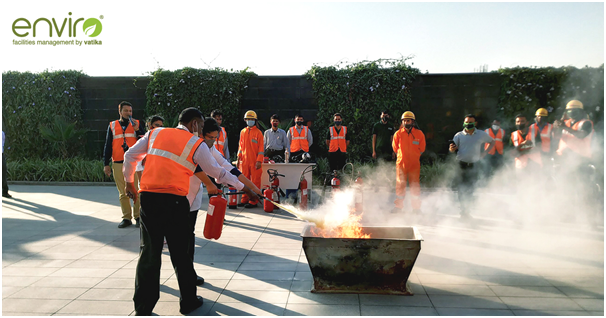
Fire Safety Audit : The First Step to Prevent Fire
A routine audit can timely detect any possible malfunction and also suggest recommendations that would help in maintenance. The audit gives a detailed assessment of the wear and tear that has occurred over time and due to other conditions, such as, weather, chemical spillage etc.
One of the major disasters that man has been fighting for the longest time is fire. Often times, by the time one can smell the noxious gases and detect something wrong, it is already past the time where one can contain it.
A fire safety audit in a building needs to be in strict adherence with the National Building Code of India that lays emphasis on fire prevention, fire protection and life safety measures. It is an effective way to assess whether fire safety systems are in place and in compliance with the code. As part of the audit the various aspects of fire safety such as, fire and explosion prevention, protection and emergency management are systematically and critically assessed.
What does the scope of the audit entail?
- The fire audit first looks into the adequacy and relevance of the components, facilities and equipment present as on today’s dateat the premises, making a report of the expected performance.
- It also makes recommendations to be complied with for the existing rules, standards and regulations.
- The aspects covered in the fire safety audit are related to design, operation and maintenance and the review of inherent fire hazards in a building.
- In its ambit, it can also include an active system test to ensure the operation of all systems as per the design of the audit
Main focus areas in a fire audit
- To identify all the significant probable fire hazards
- To identify the people most susceptible to the fire hazards
- Assess the current SOPs in place
- Make recommendations on the additional measures required
- Explore the possibility of having an emergency safety plan in place
- Assess the availability of fire fighting equipment such as hydrants, extinguishers etc.
- Impart training and drills on the instructions and code of conduct in case of an emergency
The role of preventive maintenance in controlling fire
- Saves you from a safety equipment malfunction
- Increased protection of the building and the equipment with regular testing, inspections and proper maintenance
- Adds to the accountability of your building management services provider
- Ensures that the facility management company is compliant with the fire safety code
- Keeps a count of the total number of equipment required to ensure the safety of all the occupants
- Keeps everyone in sync with the fire protection drill and the process thereof
- Keeps you aware of all the fire safety exits and escape point, in case of an emergency situation
Understanding the important steps of inspection and fire prevention
- It is true to say that a fire can rarely be detected. However, what one can do is make sure that the fire safety standards are maintained in your building. For this one has to ensure that there are regular inspections and checks conducted that adhere to the legislative requirements.
- The inspection is carried out on the basis of a checklist that covers many areas such as the ownership, structural details, active and passive fire safety equipment in the building, SOPs and drills followed at present.
- Basis this checklist there are various recommendations made on the remedial actions that need to be taken by the user/ owner and the time by which these need to be completed.
- Fire Prevention purely relies on the upkeep and maintenance of fire safety equipment and safety measures such as securing safety exits and spreading awareness about their appropriate usage.
What are the different types of fire safety equipment?
- Fire Extinguishers – This is among the most common hand-held firefighting equipment available. The extinguishing agent inside the extinguisher is used to combat the flames. The substance used are:
- Dry powder
- Water
- CO2
- Foam
- Wet Chemical
- Fire Hoses – This puts out a large fire, by letting out a large stream of water. It comes in a fire hose reel that extends up to 30 metres.
- Fire Buckets – It maybe the simplest form of fire safety equipment but is still useful. The buckets are made of plastic or metal and contains water or soil to douse the fire.
- Fire and Welding Blankets – Another way to put out a fire is by smothering it. Blankets ranging from a size of 1.2m x 1.2m to 1.8m x 1.75m can be used depending on the kind of dwelling it is being used for.
- Flamezorb – This is a non-toxic, easy to clean powder that efficiently smothers a fire. Every bag of this powder can fill up 10 litres of a fire bucket.
Precaution is always better than cure and the same rule is applicable in case of fire safety. One must be aware and request for a routine fire safety audit and ensure that there is enough fire safety equipment in the building in case of an emergency.
Source: https://www.enviroindia.in/blog/fire-safety-audit-the-first-step-to-prevent-a-fire


